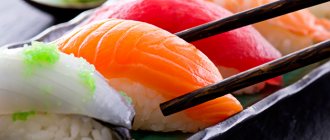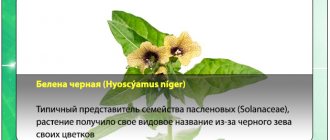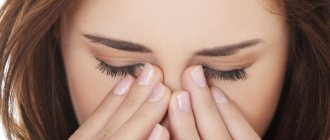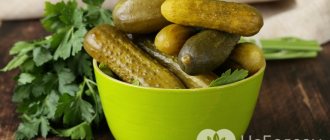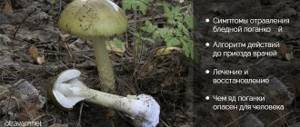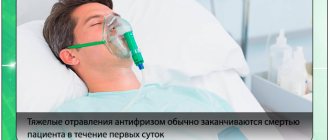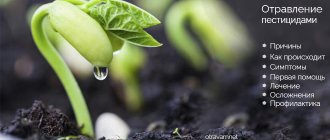Hemlock, also known as conium, omega spotted or speckled, belongs to the category of the most powerful poisonous plants, which is also used in pharmacology to create medicines, including for the treatment of cancer. It is its use for medical purposes that most often causes intoxication.
Provoking severe symptoms, hemlock is deadly
By affecting the nervous system and causing severe symptoms, hemlock poisoning is a deadly condition. Therefore, it is so important to know not only the signs of intoxication with conium, but also to be able to properly help with intoxication.
The description of hemlock, symptoms of poisoning, photos and videos in this article will replenish the necessary knowledge and help, if necessary, apply it in practice.
Description
Spotted hemlock (Conium maculatum) is a biennial herbaceous wild plant of the Apiaceae family.
It has a hollow stem 70–150 cm high, with characteristic reddish-brown spots in the lower part. Small white flowers are collected in numerous inflorescences resembling umbrellas. The root is spindle-shaped and can resemble horseradish, carrots, or parsley. Pounded hemlock emits an unpleasant mouse odor, which has an intoxicating effect. Flowering occurs in June-July, seeds ripen in August-September. History has preserved several versions of where the name of the plant came from. One of them says that the Latin Conium comes from the Greek word - killing. This is associated with the tradition of executing criminals by poisoning with the juice of poisonous plants. Thus, modern researchers, based on surviving descriptions of symptoms, believe that Socrates was forced to drink a cup of juice not from hemlock, but rather from hemlock.
The Russian name of the plant indicates its neurotoxicity, because one of the leading symptoms of poisoning is headache. Hemlock has been known for a long time, therefore it has other names that reflect the various properties of the plant - poisonous umbrella, stinking grass, omega spotted, hollow, dog parsley.
According to historians, the first mention of hemlock is found in the works of the ancient Roman writer, author of the encyclopedia “Natural History” Pliny the Elder. Practical observations on the use of hemlock to treat people are attributed to Hippocrates.
Area
Hemlock is widely distributed throughout the world. It can be found throughout Europe, North Africa, and Asian countries with a temperate climate. In Russia, hemlock grows almost everywhere, from Western Siberia to St. Petersburg, including the Caucasus.
The wide range is explained by the unpretentiousness of hemlock and the ability to develop in an environment where winter temperatures do not fall below -30 C°. An important condition is the presence of snow cover, which protects the plant from frost.
Hemlock grows as a weed in vacant lots, landfills, along fences, railroad tracks, on forest edges, near rivers and lakes. The plant reproduces especially well near livestock farms, using manure as a source of nutrients.
What does hemlock look like?
Chemical composition
All parts of spotted hemlock contain toxic substances - phytotoxins. Their unpleasant odor and bitterness of the juice protect them from being eaten by herbivores. However, these compounds in hemlock are also dangerous for humans.
The plant contains five alkaloids. The most toxic among them are coniine and its derivative N-methylkoniine. The rest are pseudoconhydrin, conicein, conhydrin. The poison causes disruption of neuromuscular transmission. Particularly life-threatening concentrations of alkaloids are contained in the leaves, and to a lesser extent in the stems. The maximum amount of poison is found in unripe seeds and fruits of the plant. Coniine is a volatile alkaloid and can enter the body through the respiratory tract.
Caffeic acid, which belongs to the group of polyphenols, was isolated from the leaves of the tree. The substance has an anti-inflammatory effect. A number of studies in the field of oncology are devoted to the use of polyphenols as an alternative method to chemotherapy.
Hemlock flowers contain flavonoids - quercetin and kaempferol. In the scientific community, these substances have not received unanimous recognition as beneficial for humans. However, there are publications indicating their antioxidant activity.
Despite the fact that spotted hemlock can cause poisoning, its healing qualities are used in folk and even professional medicine in some countries.
Contraindications
An allergic reaction and individual intolerance to spotted hemlock is extremely rare. But still it is not recommended to use it:
- children under 18 years of age;
- for hypertension;
- pregnant and lactating women;
- during the recovery period after surgery;
- history of epileptic seizures;
- malnourished patients who are on intravenous nutrition,
- with liver dysfunction;
- renal failure.
Medicinal properties
The effect of hemlock on the human body depends on the dose of the active substance. In addition to historical evidence of the use of the poisonous properties of the plant, it has long been used as a healing agent.
In Russia, hemlock medicines are used in homeopathy. These products contain microdoses of the active substance helping:
- reduce pain;
- normalize neuromuscular transmission;
- stop the process of inflammation;
- regulate urination;
- normalize female and male reproductive functions;
- relax muscles during cramps;
- stop coughing attacks.
The effect of hemlock preparations in the treatment of cancer is especially studied. In response to coniine entering the body, the immune system produces antibodies that slow down the process of division of malignant cells. However, uncontrolled use of hemlock-based products in oncology can lead to body resistance to anticancer drugs.
What's inside - composition and properties
And what exactly does hemlock include, if you look at it from a purely pragmatic point of view? And there is a whole complex of quite interesting substances, which are used in many medicines.
| Name of substances | Application |
| Alkaloids (leaves – coniine, methylconiine, conhydrin, pseudoconhydrin, coniceine) | |
| Flavonoids (flowers) | Against inflammation, tumors, irritation, to improve the walls of blood vessels. |
| Coumarins | Against spasms, additionally destroys excess cholesterol, pain reliever. |
| Flavone glycosides | Positively affects the heart. |
| Vitamin A and C | |
| Essential oils | |
| Caffeic acid | Anti-inflammatory and boosts immunity. |
In total, the list of positive properties in this herb alone is already quite large, and the flavonoids contained in the composition are also designed to fight radicals, which greatly influence the development of cancer in the body.
Uses of hemlock
The State Pharmacopoeia of the Russian Federation, XIV edition, contains a list of medicinal plant raw materials in circulation on the domestic pharmaceutical market. The grass hemlock spotted is absent from it.
Practical medicine uses the results of clinical research, including the beneficial properties of plant materials. If evidence-based medicine methods confirm the therapeutic effect of the active substance, then it becomes part of the officially recognized therapy. However, spotted hemlock, due to its unstable therapeutic effect and cases of poisoning, has ceased to be used in official medicine. Although previously drugs based on it were widely used.
Application in homeopathy
In Russia, the use of hemlock-based drugs is limited to the field of alternative medicine. Thus, the homeopathic monopreparation “Conium maculatum” is made from plant materials from spotted hemlock flowers, collected before the formation of seeds. It is used to treat cerebral atherosclerosis, seizures, sleep disorders, paresis, muscle paralysis, eye and respiratory diseases, gastrointestinal diseases, reproductive organ dysfunction, prostate adenoma, eczema.
Homeopathy is legal and can be practiced in official medical settings. Drugs manufactured according to the “like with like” treatment principle are sold in pharmacies.
Use in folk medicine
Based on natural raw materials, medicinal products are produced in the form of powder, tincture, poultice, oil, ointment, extract, and patch. Thus, the active principle of hemlock is supposed to be used not only internally, but also externally, applied to the skin.
According to traditional medicine recipes, the active substances contained in hemlock are used as:
- painkiller;
- antispasmodic;
- sedative;
- immunostimulant;
- anti-inflammatory;
- antimicrobial;
- fungicidal;
- antidote for poisoning with strychnine-like substances.
Effect on the human body
Hemlock can have various effects:
- Antitumor;
- Anticonvulsant;
- Regenerating;
- Antimicrobial;
- Antispasmodic;
- Calming;
- Antihypertensive;
- Diuretic;
- Immunomodulatory.
Until the end of the 19th century, the herb was included in the state pharmacopoeia as an antispasmodic and analgesic. Later it was excluded from it due to severe toxicity. At the moment, the plant does not have official medical status; it is used in homeopathy and traditional medicine.
Hemlock poisoning
An unpleasant odor and bitter taste cannot always warn a person about possible intoxication. The effect of the poison contained in hemlock manifests itself when it enters the gastrointestinal tract, inhalation of volatile components of essential oils, alkaloids, and also upon contact with the skin.
How can you get poisoned by hemlock? The structure and appearance of the grass give it a resemblance to some edible plants.
- In the first year of its life, the leaves of Omega spotted plant can be confused with carrots or parsley.
- When the stem appears, it is often mistaken for dill.
- The spindle-shaped white root of the plant is sometimes confused with horseradish.
- The hollow stem attracts the attention of children, who use it as a pipe. No wonder one of the names of the grass is whistler.
- The penetration of poison through the skin occurs when the plant is collected for the preparation of medicinal raw materials.
And also cases of hemlock poisoning occur as a result of an overdose of traditional medicine. The inability to maintain the exact concentration of the active substance threatens health and even life.
Symptoms of hemlock poisoning
The alkaloid coniine is highly soluble in water and quickly absorbed through the mucous membrane of the mouth, intestines or skin. By entering into chemical reactions, it blocks the neuromuscular transmission of impulses. It is thanks to the curare-like effect of the alkaloid that paralysis of the muscles, including the respiratory one, develops.
The first signs of poisoning may appear 1.5–2 hours after enteral (food) ingestion of the toxin, and at high concentrations they will appear within 30 minutes.
Symptoms of hemlock poisoning are as follows:
- headache, dizziness;
- stomach ache;
- nausea, vomiting;
- diarrhea;
- increased urination;
- increased salivation;
- visual impairment due to dilated pupils;
- hearing loss;
- paresthesia (sensitivity disorders in the form of “crawling goosebumps”, tingling);
- pale skin;
- shortness of breath with difficulty exhaling;
- heart rhythm disturbances - tachycardia (increased frequency), uneven beats, which are replaced by bradycardia (decreased);
- convulsive syndrome;
- muscle paralysis starting from the lower extremities, unsteadiness of gait;
- swallowing disorders;
- depression of consciousness due to acute respiratory failure;
- arterial hypotension.
Death from poisoning with hemlock alkaloids occurs due to paralysis of the respiratory muscles.
First aid
Spotted hemlock poisoning can occur in spring and summer. This is facilitated by the active work of gardeners, agricultural workers, trips to children's holiday camps, and the high tourist season.
The first signs of poisoning must be associated with a poisonous plant. The toxic alkaloid is absorbed very quickly, posing a threat to human life, so help must begin by calling medical specialists.
What to do in case of hemlock poisoning before emergency services arrive?
- In case of intoxication with volatile alkaloids and essential oils, remove the toxic source from the room and ventilate the room.
- If the alkaloid gets on the skin, rinse the affected areas with clean water without rubbing.
- In case of food poisoning and no contraindications, induce vomiting.
- If the victim experiences circulatory arrest, perform cardiopulmonary resuscitation.
Before the arrival of medical specialists, it is necessary to monitor consciousness, breathing, blood pressure, and pulse. Gastric lavage should not be performed on victims with depressed consciousness, as the procedure may be complicated by aspiration of gastric contents.
Treatment
Patients with acute hemlock poisoning are indicated for intensive care in a toxicology or intensive care unit.
There is no specific antidote for hemlock alkaloids, so the patient is treated symptomatically:
- gastric lavage;
- introduction of enterosorbents;
- infusion therapy;
- blood pressure correction;
- antiarrhythmic, anticonvulsant drugs.
Depending on the indications, respiratory therapy is carried out - artificial ventilation.
Routes of intoxication
Hemlock poisoning can occur in several ways.
- Through the respiratory tract, inhaling the aroma of this plant is life-threatening.
- Through contact of the plant with human skin (when collecting raw materials without following the proper rules - gloves, respirator, safety glasses).
- Internal use. This method of hemlock poisoning refers mainly to the first year of the plant’s life. During this period, it is easy to confuse it with ordinary parsley or carrots. And the newly emerged hemlock stem is very similar to the shoots of dill.
Emergency help if hemlock gets into the gastrointestinal tract
Safe position for an unconscious person
Not only the first signs of intoxication with this plant, but even the slightest suspicion that some part of it has been swallowed is a direct indication of first aid.
It consists of:
In intensive gastric lavage.
To do this, the victim needs to drink about 500 ml of water, and then, by pressing on the root of the tongue independently or with the help of other people, provoke vomiting. It is advisable to add a few drops of vegetable or olive oil to the water. It is necessary to rinse the stomach until food residues no longer appear in the vomit.
When taking enterosorbents
. Such drugs include activated carbon, smecta, polysorb, enterosgel and other agents of similar action. The instructions for each of them describe the dosage and method of use in different situations, which must be followed. With the exception of activated carbon, a single dose of which should be 1 gram per kilogram of the victim’s weight.
In drinking
. In case of hemlock poisoning, it is advisable to drink liquids with a high tannin content. Such drinks include strong black tea (see Strong tea for food poisoning, what you can drink if your body is intoxicated with food), natural and instant coffee, and decoctions of some herbs. If you don’t have anything like this at hand, you can drink a little plain water.
In providing warmth and peace.
The poisoned person should be placed in a comfortable position, preferably on his side, which will prevent accidental ingestion of vomit during repeated attacks of nausea. It is advisable to cover the victim with a blanket, a blanket or warm clothes and provide a flow of fresh air.
Take care of the poisoned person before the doctors arrive
ATTENTION! If a child under 2 years of age has been poisoned by hemlock, rinsing is strictly prohibited! Also, under no circumstances should you try to cleanse the stomach of people who are unconscious in this way.
If the health of the poisoned person worsens, he is unconscious and does not respond to external stimuli, it is necessary:
- Place him in a stable position on his right side, placing the victim’s left hand under his head.
- Cover with warm clothes.
- Closely monitor your heart rate and breathing rate.
- If the heartbeat cannot be felt and breathing becomes shallow or absent altogether, resuscitation must be started immediately.
Ointment
Another proven method for people to use. Usually used in combination with tincture or decoction for external damage. By the way, pharmacies also sell a similar ointment, but everything can be done calmly and at home. Moreover, in this case you will always be sure of the natural origin of the medicine.
A small digression. As you can see, hemlock is also used in official pharmacology, where they have also long known about its beneficial properties. And the first followers of homeopathy already created the first dietary supplements for lovers of environmentally friendly, pure treatment. In general, the herb has been known to everyone for a long time and everyone recognizes it.
So, the recipe for making the ointment:
- Take 2 cups of dry leaves or seeds
- Fill with oil “under the lid” (olive or sunflower)
- Close hermetically
- Leave in a dark place. The infusion period is three weeks. You can shake it periodically (by the way, shaking is also quite applicable when creating an alcohol tincture).
- After infusion, strain the mixture and store it in a cool place (again, you can carefully remember about the refrigerator).
- At this stage, we do not receive an ointment, but a medicated oil.
- To obtain the ointment, take vegetable oil and put it on fire.
- Add wax for light thickening.
- Add our hemlock oil to the resulting mixture to create an ointment.
Usually the ointment is applied to the tumor a couple of times a day using a thin application method, but you can also use tampons and lotions - sometimes it’s even more convenient, for example, for diseases of the female genital organs.
Symptoms
If hemlock poisoning occurs in a mild form, then the gastrointestinal tract symptoms will appear first . The victim experiences diarrhea, attacks of nausea, pain in the abdomen, and increased salivation.
The first warning signs appear 2 hours after poisoning. In people with hypersensitivity to horse meat, this time can be reduced to half an hour.
Toxic substances quickly spread throughout the body. The following symptoms of poisoning are distinguished:
- Attacks of nausea, diarrhea and vomiting.
- Dizziness and headache.
- Drooling and itching sensation in the mouth.
- Abdominal pain.
- Loss of skin sensitivity.
- Visual impairment, excessive pupil dilation.
- The skin becomes too pale.
- The heartbeat quickens, the rhythm becomes erratic.
- Shortness of breath and difficulty breathing appears.
- Individual muscles can contract spontaneously.
In case of severe intoxication, muscle weakness will gradually increase. Over time, paralysis may occur . The victim feels heaviness in the limbs, goosebumps are felt throughout the body, and swallowing is difficult. If measures are not taken in time, the respiratory center becomes depressed, the person loses consciousness and soon dies.
Possible consequences
Mild hemlock poisoning with timely treatment usually ends safely.
Hemlock poisoning is very dangerous for pregnant women. In them, it can cause the development of fetal pathologies and cause spontaneous miscarriage.
In children, hemlock poisoning is especially severe, which is associated with the increased sensitivity of the child’s body to toxic substances.
Complications of hemlock poisoning can include pneumonia, toxic hepatitis and nephritis.
Severe hemlock poisoning, even with timely treatment, often ends in death due to ascending paralysis, respiratory and cardiovascular failure.
How can they get poisoned?
Attempting treatment with such means is a huge risk.
In addition to the sad consequences of collecting and using hemlock as folk medicine, the cause of intoxication can be:
- accidental contact with any part of the plant;
- mistakenly ingesting seeds or leaves (which actually look like parsley);
- accidentally adding a young stem, which at the beginning of growth resembles dill, to a salad or other dishes;
- intentional use of poison for the purpose of suicide;
- an attempt to poison another person.
IMPORTANT! Whatever the reason, the result is always the same - severe intoxication with a high risk of death.
Symptoms
It is paralysis of the respiratory center and suffocation that often become the cause of death during hemlock intoxication.
With minor intoxication, the condition is very reminiscent of banal, mild food poisoning, accompanied by nausea, mild diarrhea, and slight lethargy. Such symptoms usually develop after one, less often two, hours after consuming hemlock in any form. But if a person is sensitive to the poison of this plant, symptoms can develop in just 15 minutes.
If large amounts of hemlock are ingested, signs of poisoning are not limited to damage to the digestive tract. The poison of this plant acts comprehensively, affecting almost all systems of the body. Therefore, symptoms can be divided into certain groups.
| System | Symptoms |
| CNS |
|
| Heart and blood vessels |
|
| Respiratory system |
|
| Gastrointestinal tract |
|
| Skin |
|
In severe cases, the victim develops a coma
IMPORTANT! All these signs point to one thing - dangerous hemlock poisoning, which requires medical control as quickly as possible. In the event of paralysis or coma, irreversible damage to the central nervous and cardiovascular systems may develop, so you should not hesitate to call an ambulance - the sooner the victim is examined by a doctor, the greater the chance of proper timely assistance and further successful recovery.
When is medical attention required?
If hemlock poisoning occurs, what should you do? It is necessary to seek help from a doctor, regardless of the severity of intoxication.
Only in a medical institution will they be able to provide full assistance and carry out the necessary treatment.
Treatment for poisoning includes:
- A solution of tannin or sulfuric acid 5% is introduced to reduce the toxic effect of poisons;
- A cleansing enema is performed with the addition of magnesium sulfate;
- Diuretics are prescribed;
- Magnesium Sulfate is used to reduce seizures;
- Analeptics are used to restore the breathing process.
Treatment of hemlock poisoning is symptomatic. There is no antidote against coniine. The duration of therapy depends on the severity of intoxication and the physical condition of the body. In adults, treatment takes at least 10 days; in children, recovery occurs after a longer period of time.
Prevention
To prevent hemlock poisoning, sanitary and educational work should be carried out with the population, especially among people suffering from cancer and their relatives. Currently, doctors have a huge arsenal of modern chemotherapy agents that are much more effective and safe to use than hemlock.
It is also necessary to systematically explain to children the rules of behavior in nature. They should know that it is unacceptable to consume any plant products without the knowledge of adults. When outside the city, you should not leave children without the close attention of their parents.
Treatment
Only a specialist can develop a competent treatment program based on the patient’s medical history. Among the most common therapy methods used:
- Introduction of a solution of hydrochloric acid with a concentration of 5% or a solution of tannin . This helps deactivate poisons.
- Magnesium sulfate is used to cleanse the intestines of residual toxic substances.
- Diuretics will help speed up the process of removing toxic compounds from the body.
- In case of seizures, diazepam, sibazone or magnesium sulfate are prescribed. If cardiac arrhythmias occur, intravenous administration of novocainamide is recommended. Caffeine and camphor can also help solve heart problems .
- If respiratory failure increases, analeptics are used. In some cases they do not have the desired effect. In this situation, artificial ventilation is advisable.
Only timely correct treatment will guarantee that the poisoning will pass without complications.
Symptoms of plant intoxication
Symptoms of hemlock poisoning are similar to food poisoning. 30 - 40 minutes after consuming the herb, a person begins to experience a general malaise, accompanied by signs of disruption of the digestive system.
Signs:
- Pain in the abdominal cavity, nausea, vomiting;
- Intestinal upset – diarrhea;
- Head pain, dizziness;
- Irritation of the mucous epithelium of the oral cavity - itching, increased salivation;
- Deterioration of vision, change in pupil size;
- Feeling of dryness and tightness of the skin, loss of sensitivity, pallor;
- Difficulty breathing, hoarseness;
- Involuntary muscle contractions.
With severe intoxication, a person begins to experience general weakness, has difficulty moving, and the upper muscle groups, including the respiratory ones, weaken. The end result of severe poisoning is paralysis.
Respiratory functions and blood supply are impaired, as a result of which the person falls into a coma or dies.
Hemlock poisoning: first aid
If symptoms indicating severe Hemlock poisoning appear, a person should call an ambulance. First medical aid before the arrival of specialists includes measures to cleanse the body of the remnants of poisonous grass.
Help includes:
- Gastric lavage
The procedure helps the victim get rid of the remnants of the plant, thereby preventing further spread of the poison in the body. For a person, prepare a solution of potassium permanganate with a volume of at least 3 liters. The color of the liquid is pale pink. After drinking the solution, vomiting is artificially induced. The procedure is repeated until it is obvious that the stomach is completely cleared of contents.
- Sorbents
To reduce the amount of toxic substances in the body, a person is given drugs that have adsorbing properties to drink. Recommended: Activated or White Carbon, Smecta, Polysorb, etc.
- Tannins
The victim is given to drink as much liquid as possible containing tannin - strong tea, oak bark decoction.
If the person is conscious, he must be taken out into fresh air. If he cannot move, provide rest, cover him with a warm blanket and open a window for an influx of oxygen.
Why does poisoning occur?
It has been known for a long time that hemlock is poisonous. It contains the following highly toxic substances:
- Konyin. Contained in the stem and leaves of the plant in fairly high concentrations. A dose of 0.15 grams is considered lethal. Causes respiratory nerve paralysis .
- Cicutotoxin. A potent narcotic poison. Has a cholinolytic effect.
- Gamma-coniceine.
- Conhydrin. Poisonous alkaloid of plant origin.
Poisons remain in the plant even after it is dried . When spotted hemlock is consumed, toxic substances are quickly distributed through the bloodstream throughout the body. This leads to damage to the nervous and respiratory systems. The immune system is activated. In this regard, a positive effect in the fight against tumors was noted. But such stimulation of the immune system quickly leads to its complete depletion.
If the human body is weakened, then taking even a few drops of hemlock tincture can provoke death. It has a pronounced toxic effect on the liver, heart and kidneys.
Danikov's technique
Another reception scheme with an interesting increase. Which one is better is up to you to decide.
- Start with 1 drop per day, diluted in 100 ml of water.
- Every day increase the dosage by 1 drop.
- Reach day 25.
- Increase the dose - take 4 times a day, 15 drops.
- Use until complete recovery.
If signs of poisoning begin to appear here, it is recommended not to stop the course, but to suspend it for one day.
Application area
Hemlocks begin to bloom in July and bear fruit in August.
For medicinal purposes, the herbaceous part of the hemlock is mainly used, which is collected and prepared during the period of flowering and the appearance of the first fruits.
Due to the fact that this plant is extremely poisonous, and all parts from roots to tops and seeds are dangerous, its use as a medicine in any form has long been considered irrational. However, literally 20 years ago, Russian scientists patented some drugs for the treatment of sarcoma and some other types of tumors based on hemlock. True, it has not yet been possible to achieve much success in treatment with the help of these remedies, but cases of serious poisoning have become significantly more frequent.
As for other methods of using hemlock poison, it is used in folk medicine to prepare all kinds of infusions, ointments and decoctions. Which becomes the cause of severe intoxication, if not from the “medicine” itself, then due to the collection of the necessary ingredients.
In other areas, the juice of this plant was at one time used to tan certain types of leather. However, again, due to the extreme toxicity, this practice has almost been abandoned.
Interesting. Hemlock has a rich history. During Ancient Greece, its juice was officially used to carry out death sentences. It is believed that even the great Socrates was poisoned by this plant. Hemlock is also a honey plant, but its toxicity precludes its use as a honey plant.
How to prepare and store
All parts of the plant are used in herbal medicine. When preparing, you must adhere to the following precautions:
- When preparing raw materials, you need to wear protective nitrile gloves (designed for working with organic acids) and safety glasses, or even better, a respirator;
- due to the strong smell, it is better to collect in windy weather and stand from the plant on the side from which the wind blows;
- Under no circumstances should children be involved in the collection;
- after finishing work, thoroughly wash your hands and face with water, wash your clothes, because seeds may remain in them;
- During drying, do not dry other herbs or store food near this plant.
Place dried herbs and berries in a dark glass container with a tight lid. Raw materials should be stored out of the reach of children and other household members.
Share in the comments if you have ever seen or used this medicinal but dangerous plant. What were the results?
